Abstract
Transport of D-glucose across human erythrocyte membranes occurs via a facilitated diffusion process which demonstrates influx-efflux asymmetry. The mechanism of the asymmetry has been studied by estimating unidirectional fluxes in the presence or absence of trans equilibrium hexose. In the absence of transhexose, the half-saturation constant for efflux at 15°C was approximately 10 mM as compared with 27 mM for influx; the corresponding values for maximal transfer rates (μmol/min per ml cell H2O) were approximately 51 vs. 18. The estimation of kinetic parameters, including the constant Fs, which is the ratio of maximal transfer rate/half-saturation constant, indicates a unique effect of intracellular hexose on the transfer system. Further evidence to support this conclusion was obtained by studying the effects of noncompetitive inhibitors on efflux vs. influx. N-ethylmaleimide, p-chloromercuribenzenesulfonate, and dichloroallyldiethylstilbestrol all inhibited efflux much more than influx. Glucose rendered the transport system more reactive to N-ethylmaleimide as assayed by efflux, whereas influx was much less affected. The results support the hypothesis that the transport system exists in two states. Transition from one state to the other is dependent on the presence of intracellular hexose.
Full text
PDF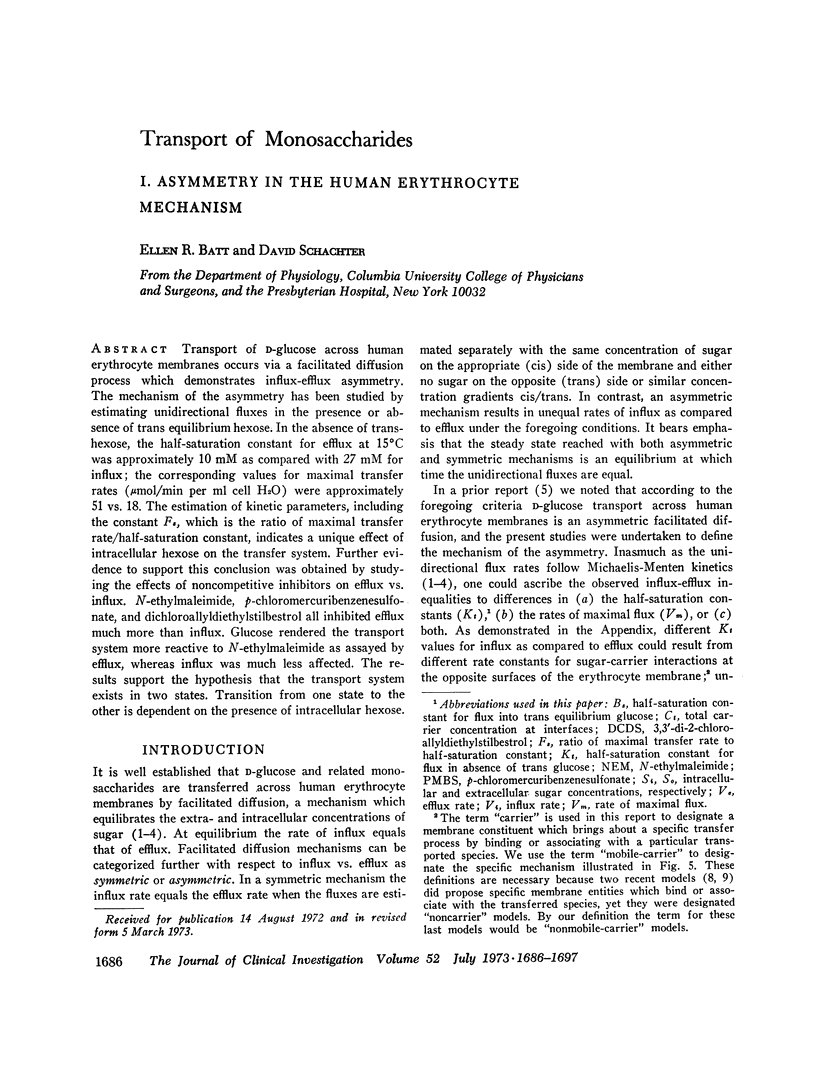
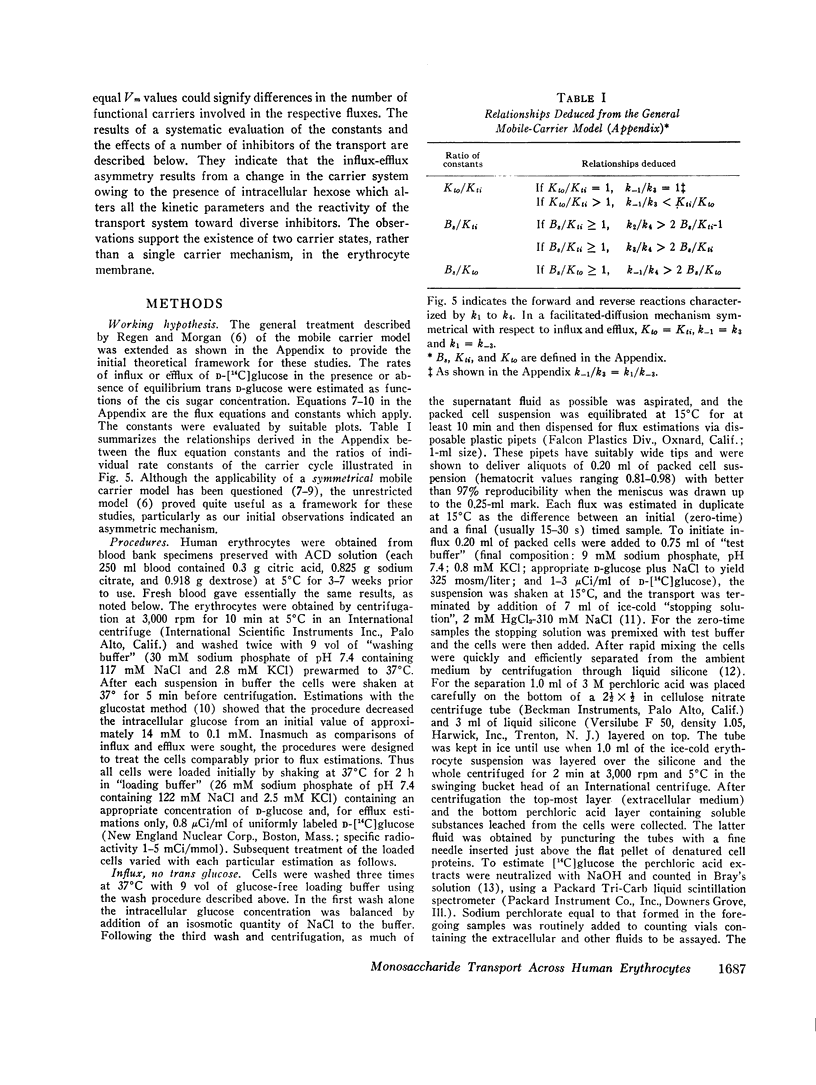
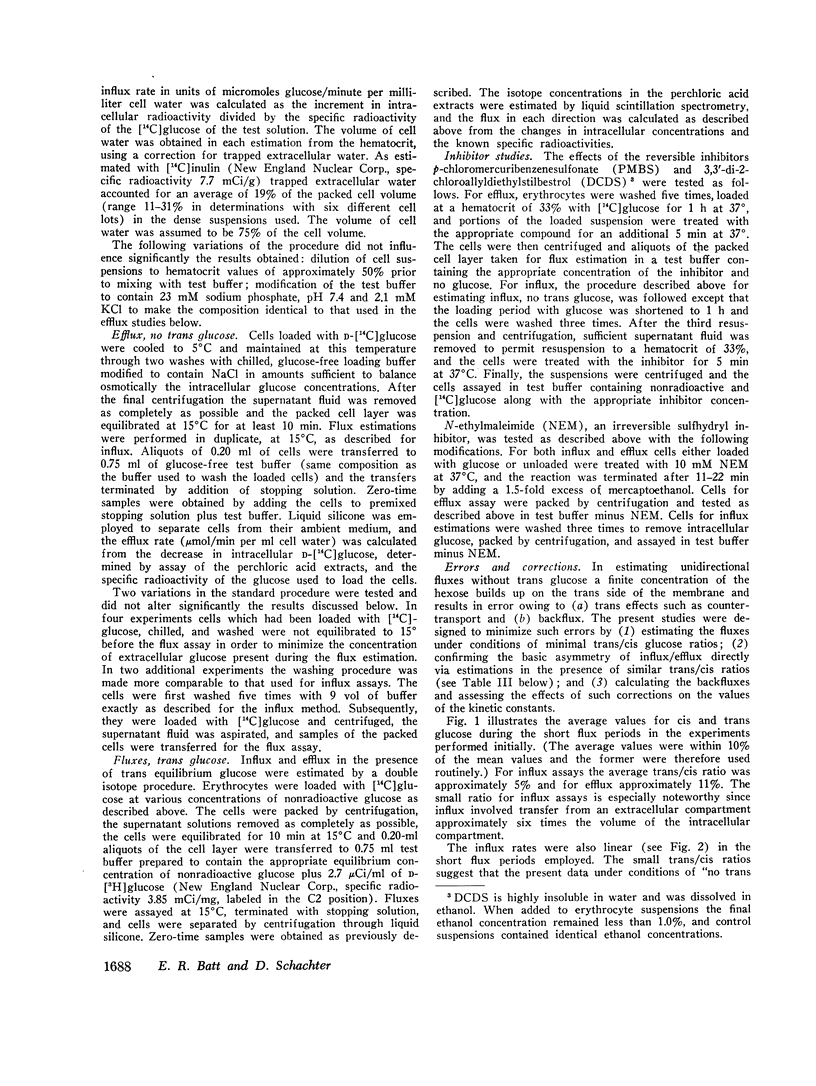
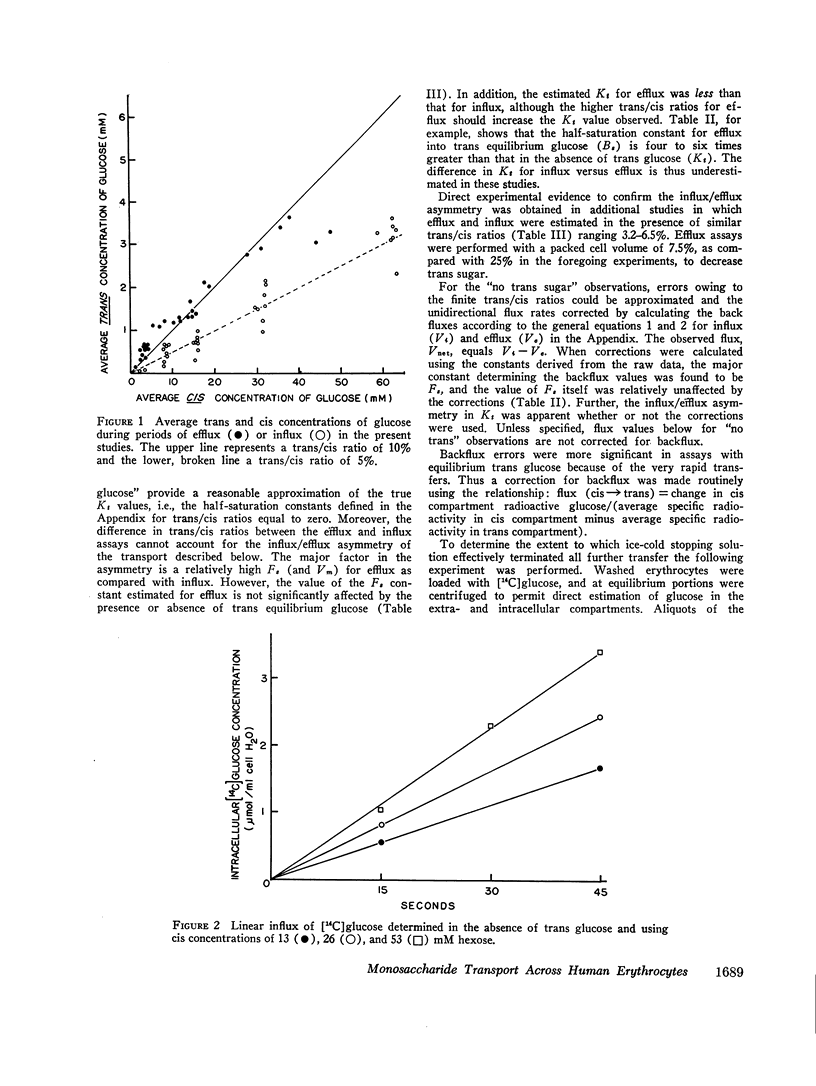
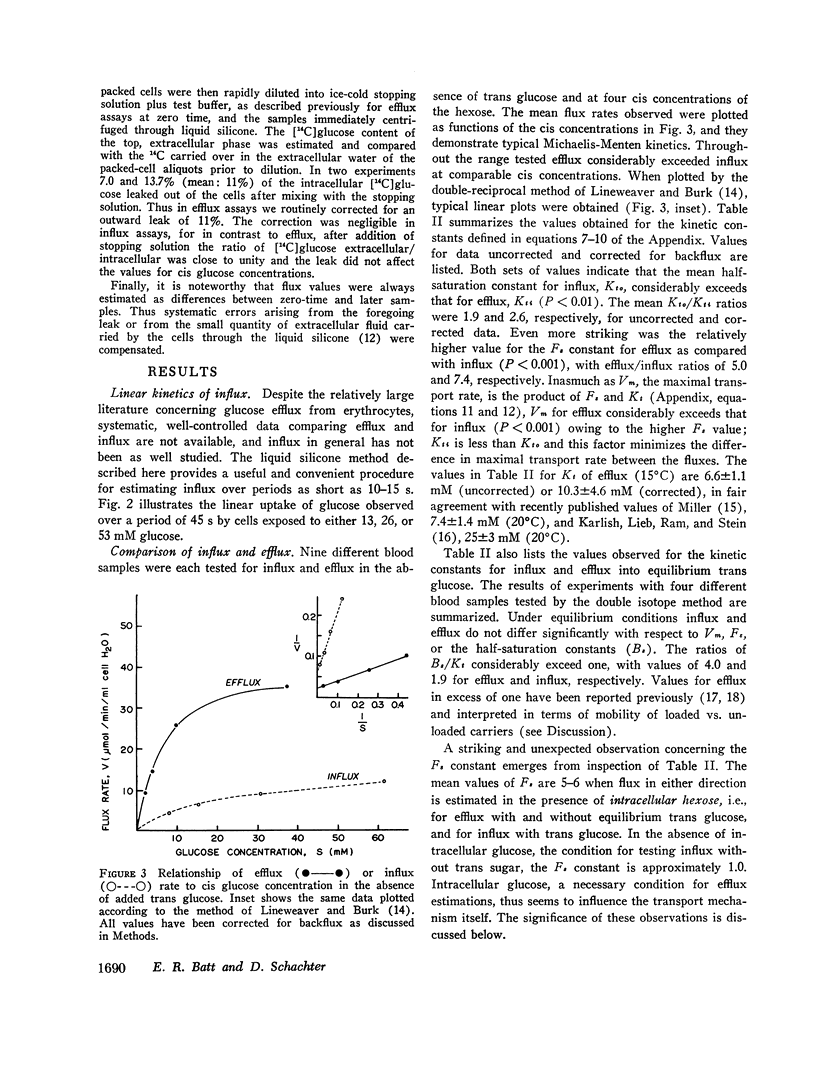
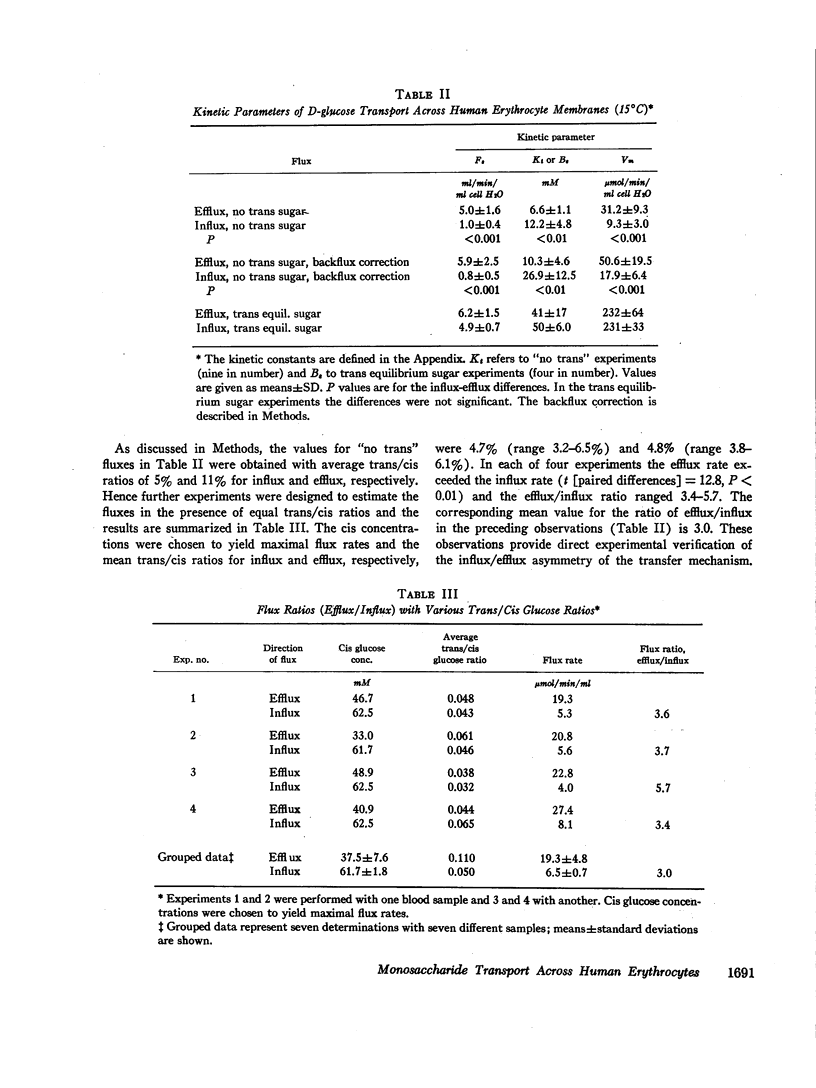
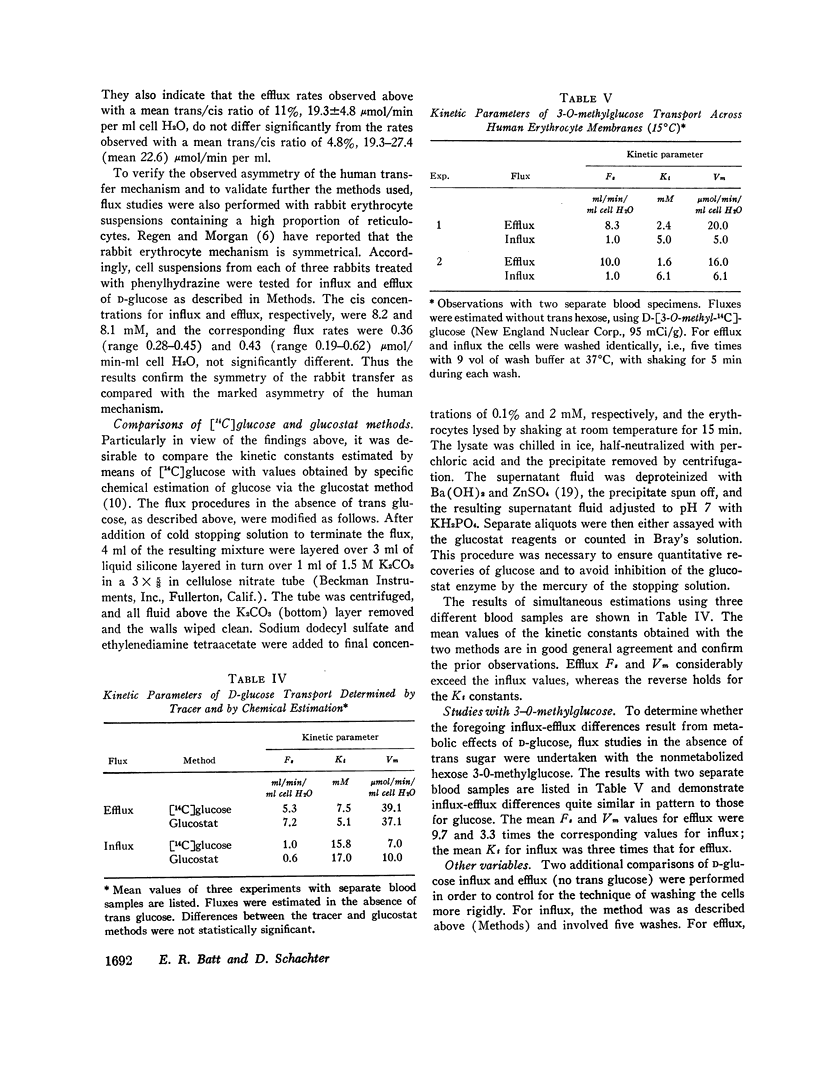
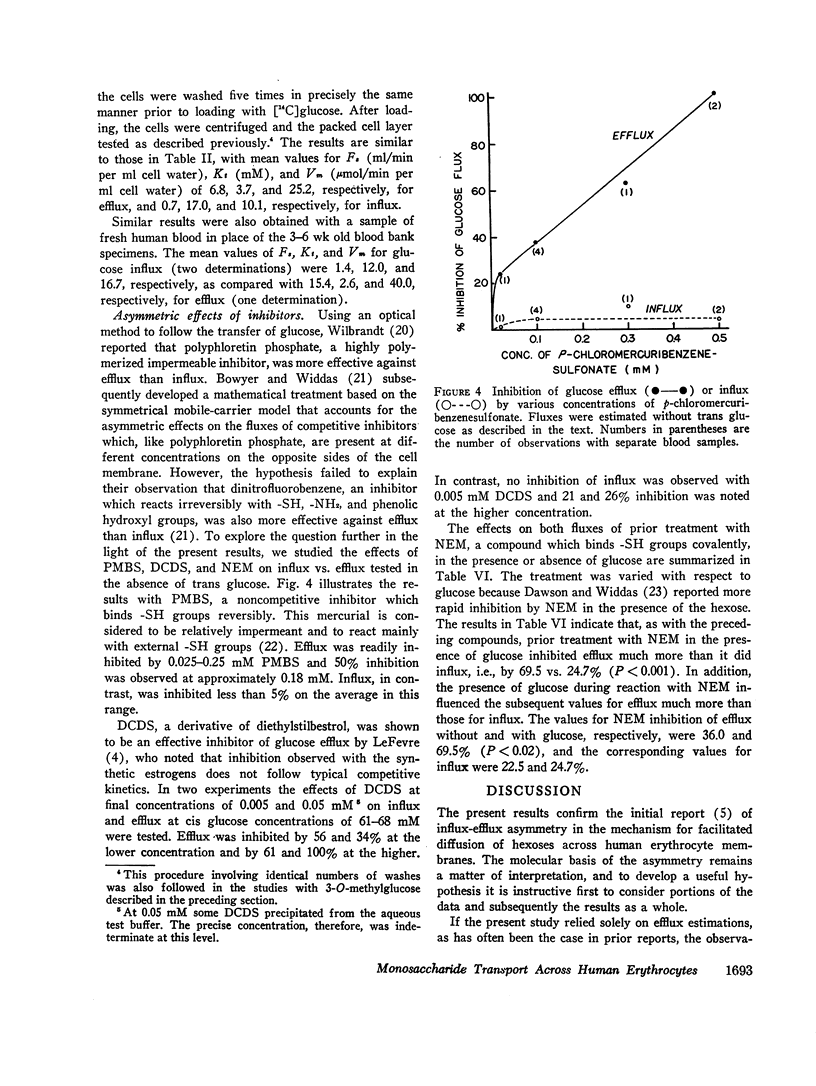
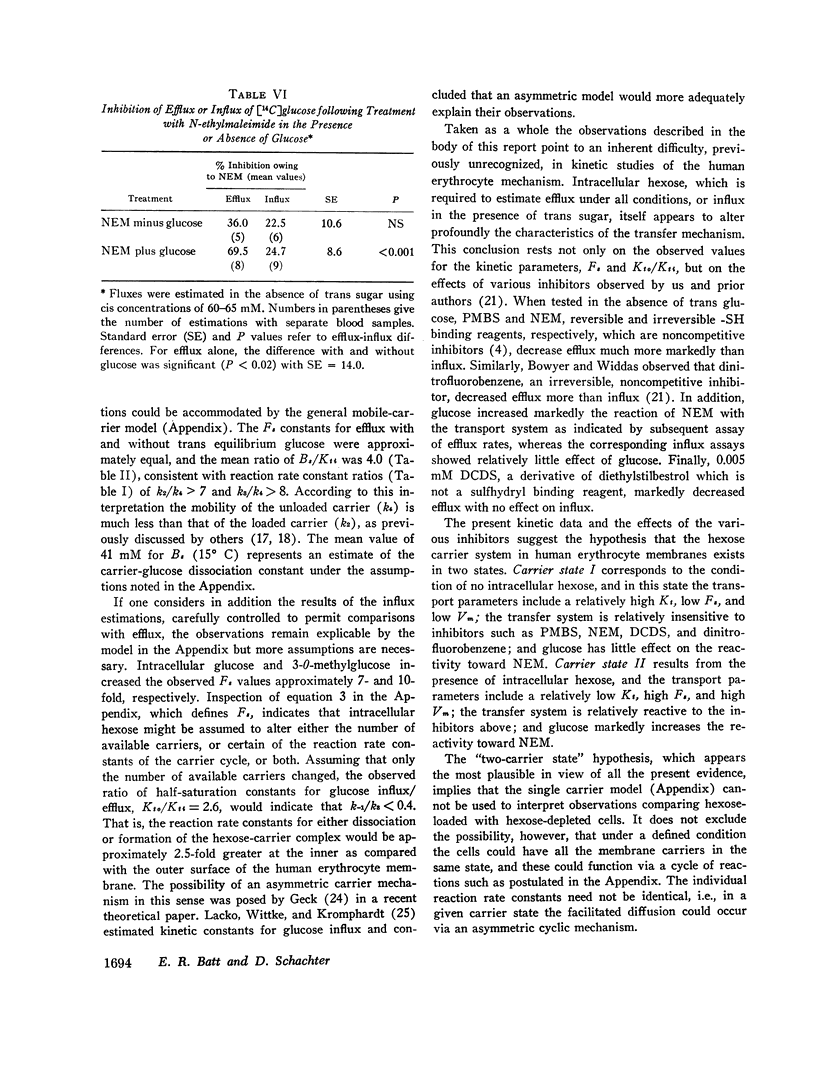
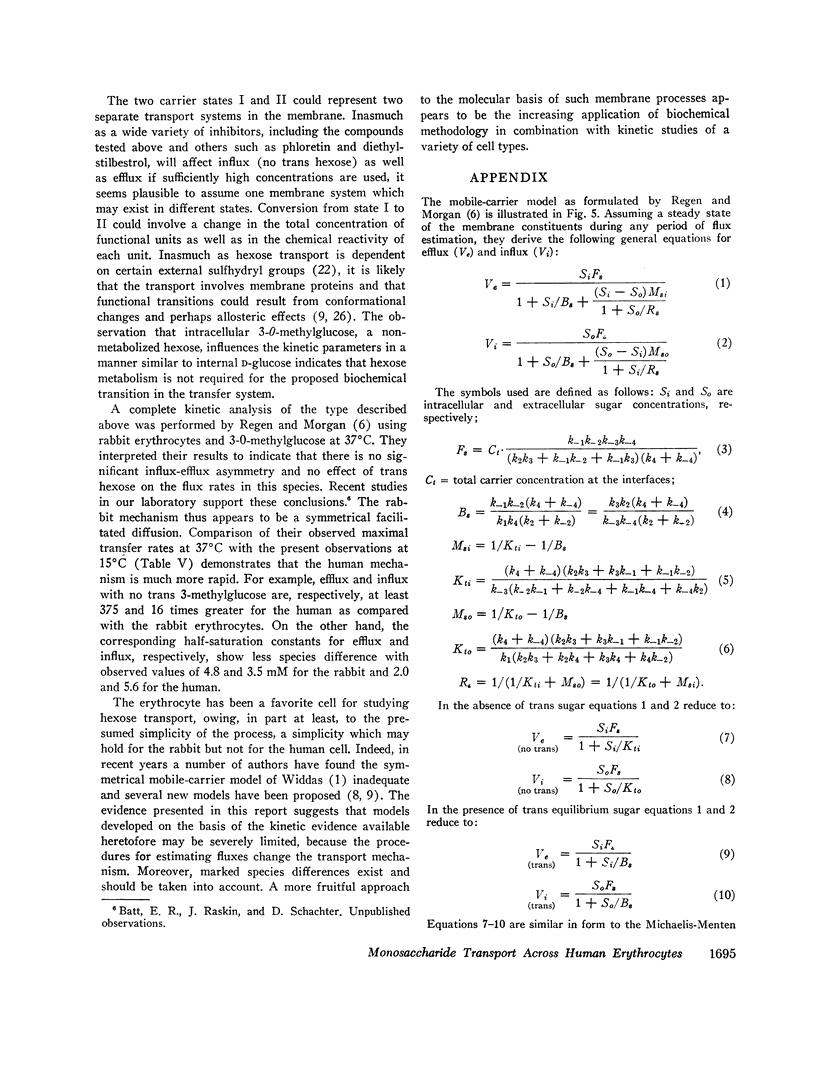
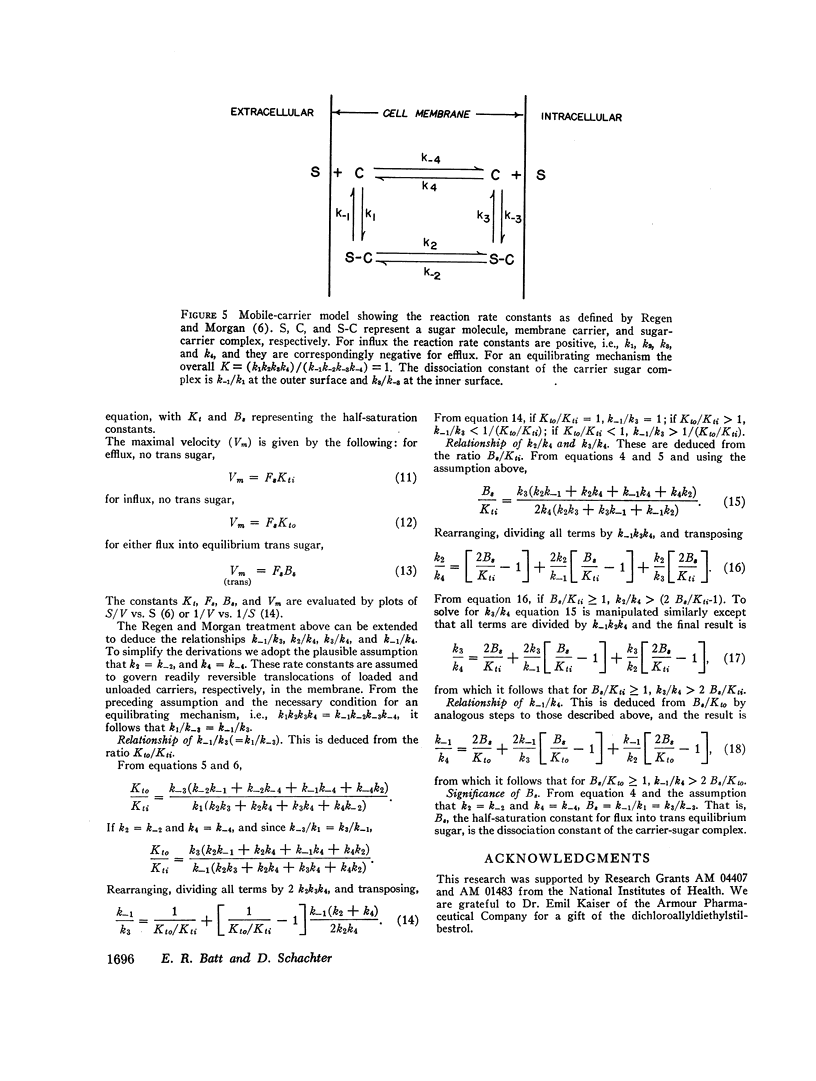
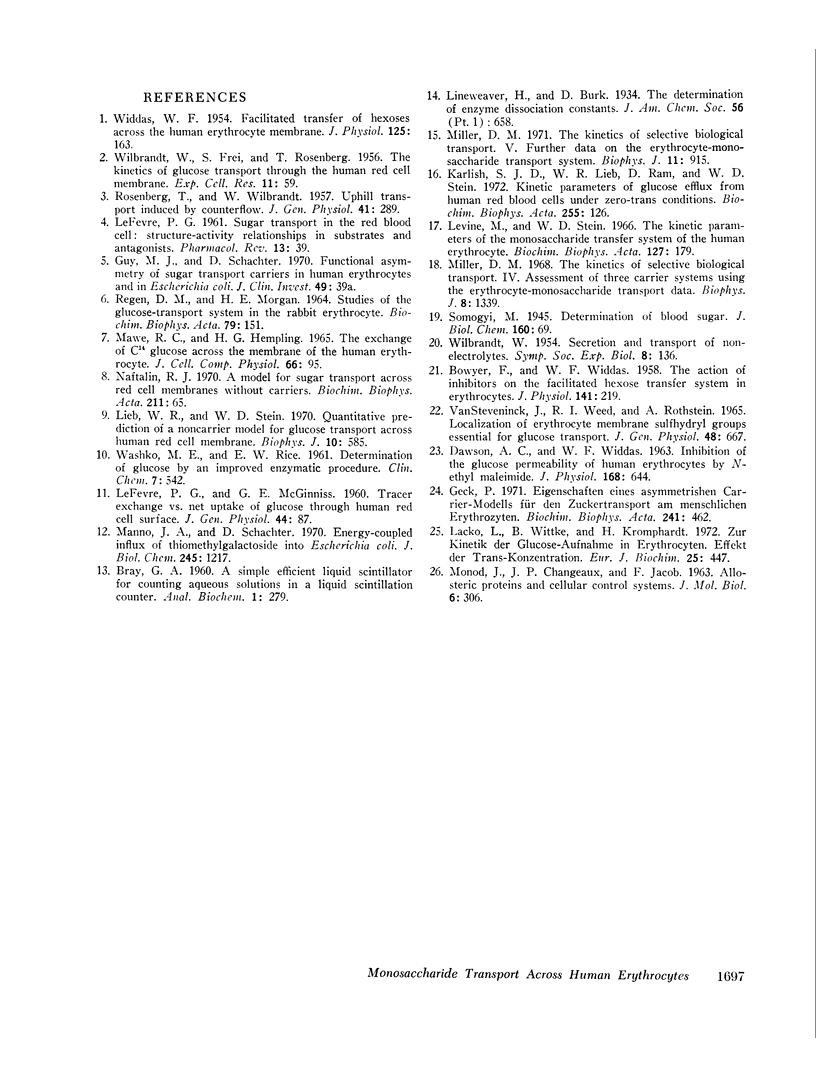
Selected References
These references are in PubMed. This may not be the complete list of references from this article.
- BOWYER F., WIDDAS W. F. The action of inhibitors on the facilitated hexose transfer system in erythrocytes. J Physiol. 1958 Apr 30;141(2):219–232. doi: 10.1113/jphysiol.1958.sp005969. [DOI] [PMC free article] [PubMed] [Google Scholar]
- DAWSON A. C., WIDDAS W. F. INHIBITION OF THE GLUCOSE PERMEABILITY OF HUMAN ERYTHROCYTES BY N-ETHYL MALEIMIDE. J Physiol. 1963 Oct;168:644–659. doi: 10.1113/jphysiol.1963.sp007213. [DOI] [PMC free article] [PubMed] [Google Scholar]
- FREI S., ROSENBERG T., WILBRANDT W. The kinetics of glucose transport through the human red cell membrane. Exp Cell Res. 1956 Aug;11(1):59–66. doi: 10.1016/0014-4827(56)90190-2. [DOI] [PubMed] [Google Scholar]
- Geck P. Eigenschaften eines asymmetrischen Carrier-Modells für den Zuckertrnasport am menschlichen Erythrozyten. Biochim Biophys Acta. 1971 Aug 13;241(2):462–472. doi: 10.1016/0005-2736(71)90045-9. [DOI] [PubMed] [Google Scholar]
- Karlish S. J., Lieb W. R., Ram D., Stein W. D. Kinetic parameters of glucose efflux from human red blood cells under zero-trans conditions. Biochim Biophys Acta. 1972 Jan 17;255(1):126–132. doi: 10.1016/0005-2736(72)90014-4. [DOI] [PubMed] [Google Scholar]
- LEFEVRE P. G. Sugar transport in the red blood cell: structure-activity relationships in substrates and antagonists. Pharmacol Rev. 1961 Mar;13:39–70. [PubMed] [Google Scholar]
- Lacko L., Wittke B., Kromphardt H. Zur Kinetik der Glucose-Aufnahme in Erythrocyten. Effekt der Trans-Konzentraion. Eur J Biochem. 1972 Feb;25(3):447–454. doi: 10.1111/j.1432-1033.1972.tb01714.x. [DOI] [PubMed] [Google Scholar]
- Levine M., Stein W. D. The kinetic parameters of the monosaccharide transfer system of the human erythrocyte. Biochim Biophys Acta. 1966 Sep 26;127(1):179–193. doi: 10.1016/0304-4165(66)90488-0. [DOI] [PubMed] [Google Scholar]
- Lieb W. R., Stein W. D. Quantitative predictions of a noncarrier model for glucose transport across the human red cell membrane. Biophys J. 1970 Jul;10(7):585–609. doi: 10.1016/s0006-3495(70)86322-6. [DOI] [PMC free article] [PubMed] [Google Scholar]
- MONOD J., CHANGEUX J. P., JACOB F. Allosteric proteins and cellular control systems. J Mol Biol. 1963 Apr;6:306–329. doi: 10.1016/s0022-2836(63)80091-1. [DOI] [PubMed] [Google Scholar]
- Manno J. A., Schachter D. Energy-coupled influx of thiomethylgalactoside into Escherichia coli. J Biol Chem. 1970 Mar 10;245(5):1217–1223. [PubMed] [Google Scholar]
- Mawe R. C., Hempling H. G. The exchange of C14 glucose across the membrane of the human erythrocyte. J Cell Physiol. 1965 Aug;66(1):95–103. doi: 10.1002/jcp.1030660110. [DOI] [PubMed] [Google Scholar]
- Miller D. M. The kinetics of selective biological transport. IV. Assessment of three carrier systems using the erythrocyte-monosaccharide transport data. Biophys J. 1968 Nov;8(11):1339–1352. doi: 10.1016/S0006-3495(68)86560-9. [DOI] [PMC free article] [PubMed] [Google Scholar]
- Miller D. M. The kinetics of selective biological transport. V. Further data on the erythrocyte-monosaccharide transport system. Biophys J. 1971 Nov;11(11):915–923. doi: 10.1016/S0006-3495(71)86263-X. [DOI] [PMC free article] [PubMed] [Google Scholar]
- Naftalin R. J. A model for sugar transport across red cell membranes without carriers. Biochim Biophys Acta. 1970 Jul 7;211(1):65–78. doi: 10.1016/0005-2736(70)90124-0. [DOI] [PubMed] [Google Scholar]
- REGEN D. M., MORGAN H. E. STUDIES OF THE GLUCOSE-TRANSPORT SYSTEM IN THE RABBIT ERYTHROCYTE. Biochim Biophys Acta. 1964 Jan 27;79:151–166. doi: 10.1016/0926-6577(64)90048-8. [DOI] [PubMed] [Google Scholar]
- ROSENBERG T., WILBRANDT W. Uphill transport induced by counterflow. J Gen Physiol. 1957 Nov 20;41(2):289–296. doi: 10.1085/jgp.41.2.289. [DOI] [PMC free article] [PubMed] [Google Scholar]
- WASHKO M. E., RICE E. W. Determination of glucose by an improved enzymatic procedure. Clin Chem. 1961 Oct;7:542–545. [PubMed] [Google Scholar]
- WIDDAS W. F. Facilitated transfer of hexoses across the human erythrocyte membrane. J Physiol. 1954 Jul 28;125(1):163–180. doi: 10.1113/jphysiol.1954.sp005148. [DOI] [PMC free article] [PubMed] [Google Scholar]


